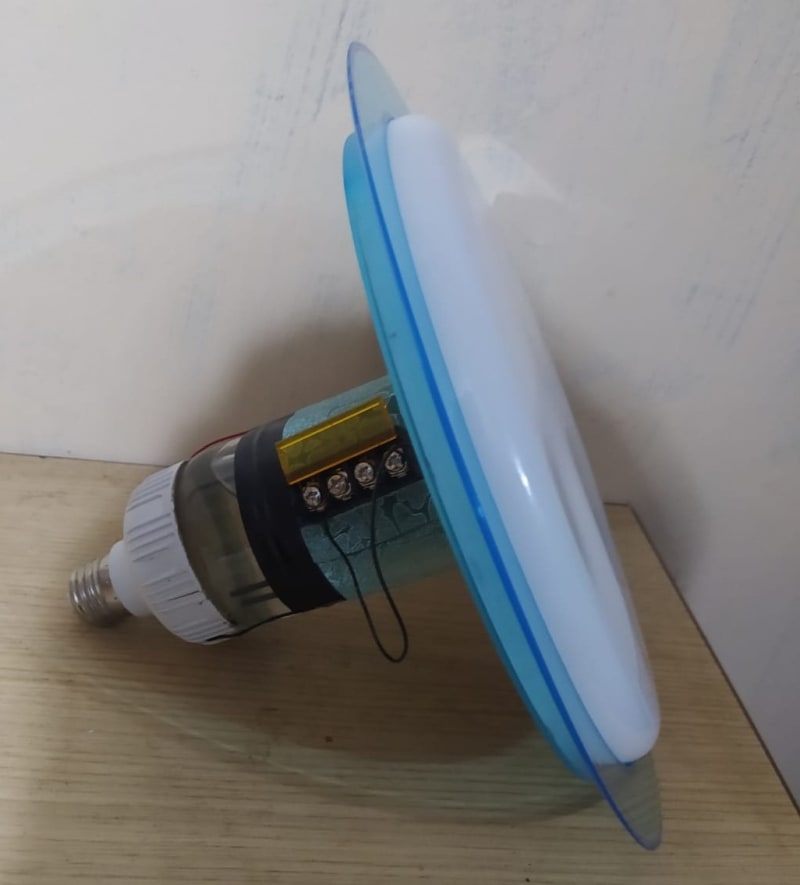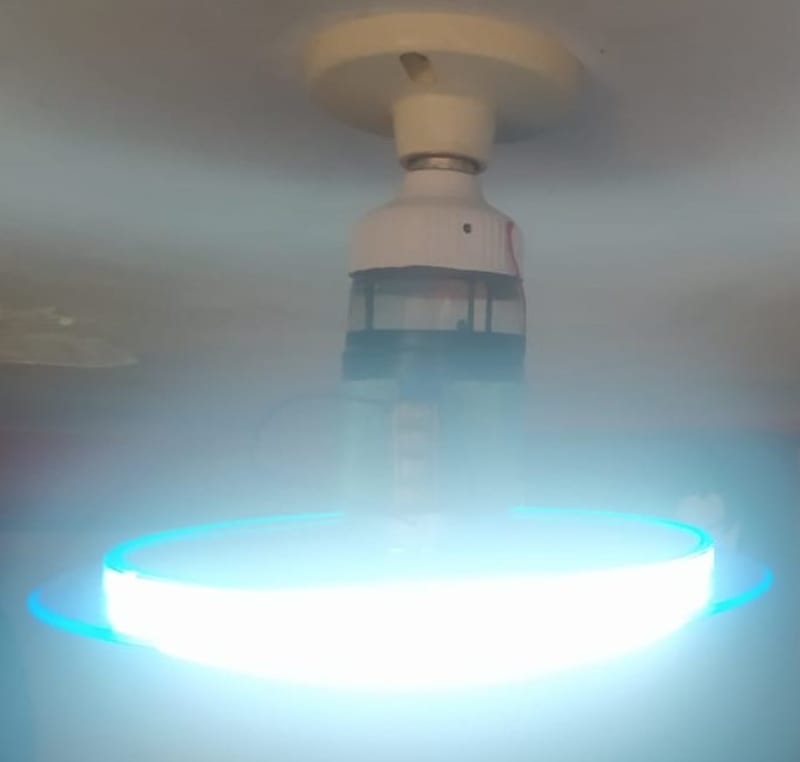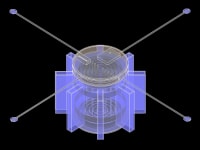System Description
The electrochemical regulator uses electrodes with an electrolyte in equilibrium, preventing reduction and oxidation at the electrodes. It operates with alternating current and is capable of varying or regulating the luminous power of LED luminaires that are not originally designed to be dimmable. The system, through its advanced technology, transforms conventional LED luminaires into ultra-efficient or super-efficient lighting devices.
The functional prototype presented is a 40-watt UFO-model LED luminaire. With the system adaptation, it can reduce consumption to just 1.60 watts while maintaining a power factor of 0.99 — qualifying it as ultra-efficient. This level of luminosity is referred to as full moon night light. At 38 watts, the power factor reaches 0.89, which is considered super-efficient, as it uses all the available electrical energy.
Another advantage is that it can be complemented with other components for remote regulation, and it includes electric shock protection.
Summary of Advantages
- Converts all LED luminaires into dimmable ones with a wide range of luminous power levels.
- Saves electricity thanks to its high efficiency (ultra-efficient with power factor from 0.99 to 1.00).
- Electric shock protection during handling and use, reducing the risk of electrocution by up to 95% due to its electrochemical technology.
- Increases the lifespan of LED luminaires by operating at lower power levels — essentially relieving them from electrical stress.
- Reduces heat generation in the luminaires thanks to its technology; widespread use could contribute to mitigating global warming.
Like this entry?
-
About the Entrant
- Name:Rulli Llancari Anyaipoma
- Type of entry:individual
- Software used for this entry:Revit, Solidwork, KiCad
- Patent status:none








